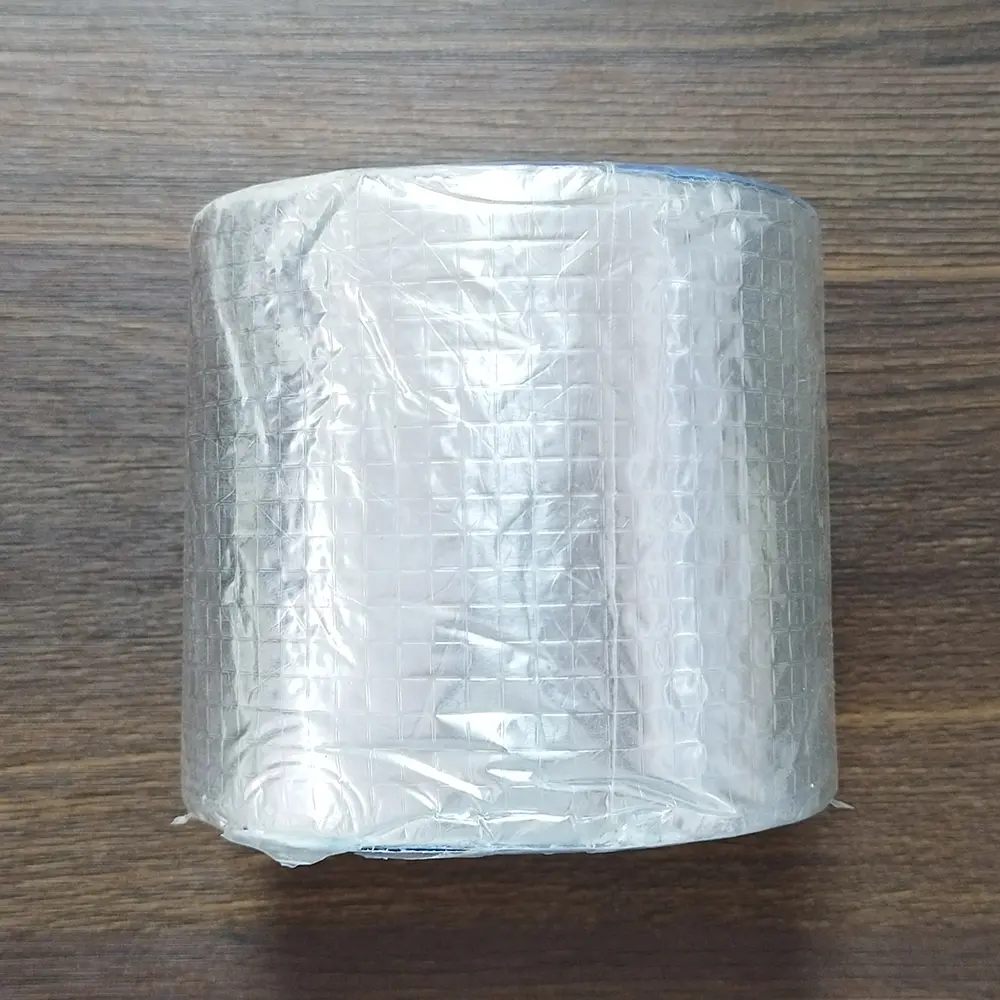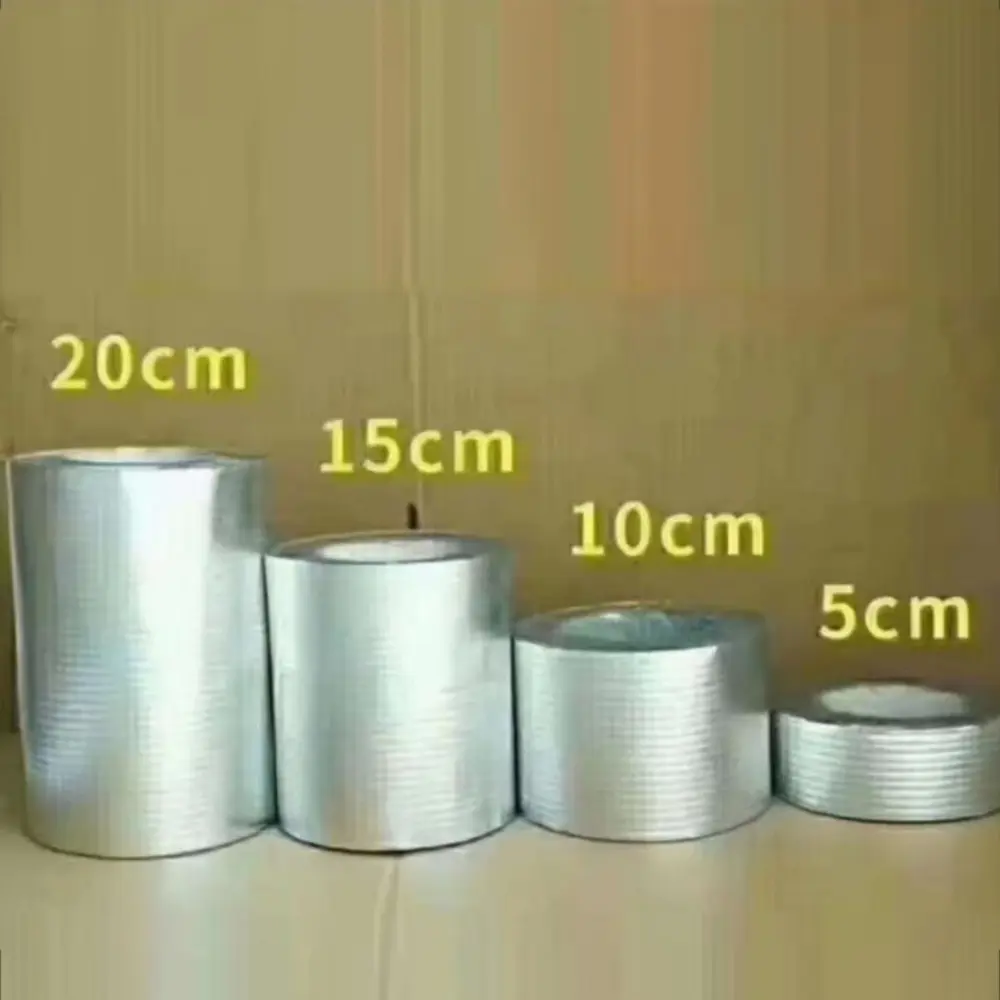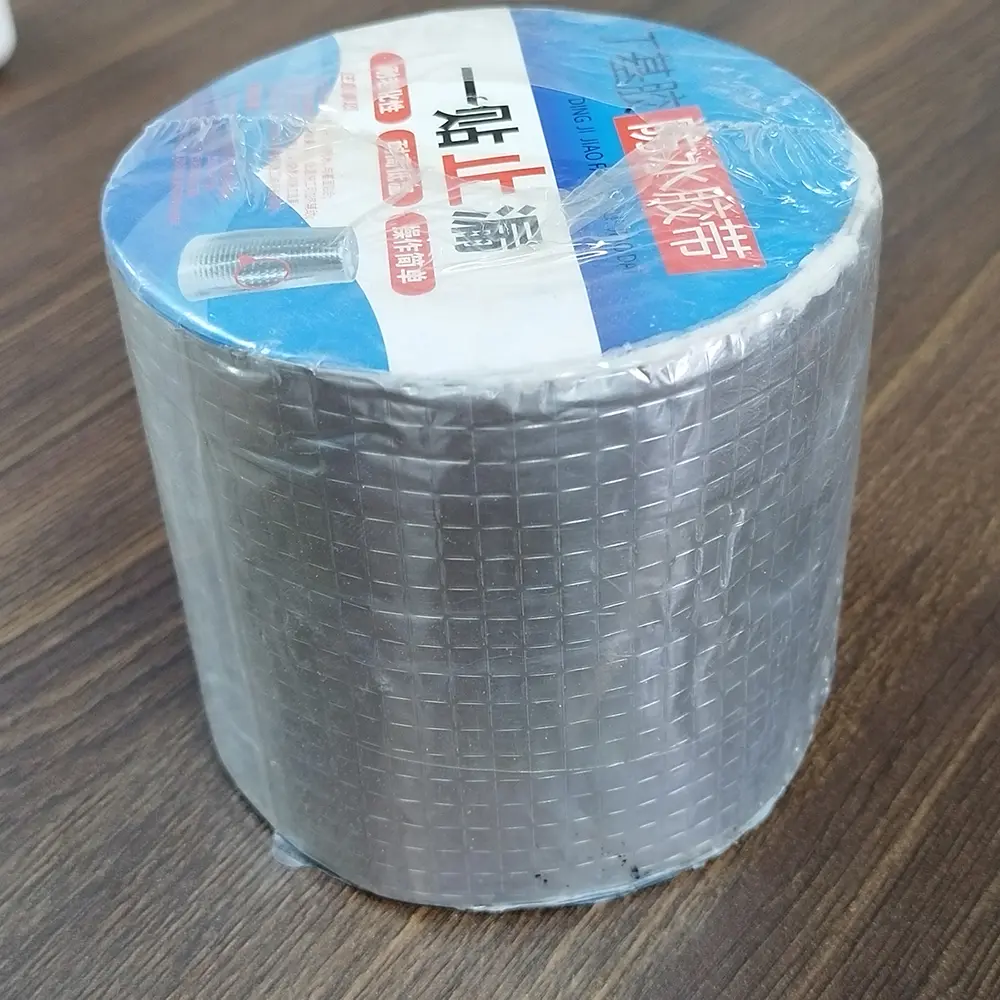Choosing the right flashing tape is crucial for any construction project, whether you’re a seasoned builder or a DIY enthusiast. This article dives deep into the world of flashing tapes, explaining their importance, types, and how to select the best product for your specific needs. Learn why using the right flashing tape is essential for creating a durable, energy-efficient, and moisture-free building envelope. If you want to ensure long-lasting and quality work, then understanding the nuances of flashing tape for windows, best flashing and creating a durable seal is a must.
1. What is Flashing Tape and Why Is It So Important?
Flashing tape is a critical component in construction and building maintenance, acting as a barrier against water and air infiltration. It’s essentially a pressure-sensitive adhesive (PSA) tape designed to create a seal over seams and joints in a building envelope, preventing unwanted moisture and air from entering. When applied correctly, flashing tapes act as a continuous front-line defense against the elements.
Different types of flashing tape exist, each designed for specific applications. Some, like butyl flash window flashing, consist of a rubberized asphalt waterproofing coating laminated to a polyethylene film. Others might use an acrylic-based adhesive for different properties. Regardless of the type, the primary goal of flashing tape remains the same: to protect a building from water damage, improve air quality and enhance energy efficiency by creating a tight building envelope. The durability of those assemblies heavily depends on choosing a high-quality product for sealing and flashing.
2. Why Is Flashing Tape for Windows Different?
While all flashing tape serves the basic purpose of providing a seal, flashing tape for windows requires a more specialized approach. Window openings are especially susceptible to water intrusion, making proper flashing essential. Window flashings also must adhere to various substrates such as osb, plywood, and even vinyl. Flashing tape for windows must also be able to withstand varying weather and temperatures, from extreme heat to extreme cold, and remain effective.

Window flashing products come in rolls with an easy-to-remove film, often incorporating a butyl or acrylic based adhesive laminated to a polyethylene or similar film. This laminated to a polyethylene film design allows the tape to be easily applied around window frames, forming a waterproof end-dam on a windowsill and preventing water from seeping into the building. Window flashing tape will also need to be thin enough to be covered by siding or other exterior finishes, and be flexible to mould around complex window designs. The benefits of window flashing are numerous, but the most important is the protection against water damage that can lead to mold, rot, and costly repairs.
3. What Makes a Right Flashing Tape for Your Project?
Choosing the right flashing tape depends heavily on the specific needs of your project. Here are a few factors to consider:
- Substrate Compatibility: Different tapes adhere best to different materials. Some are ideal for concrete, others for osb or solid wood. Ensure that the flashing tape is designed to stick to the substrate you are working with. For instance, the adhesive in butyl-based tapes adheres well to many surfaces.
- Temperature Conditions: Some tapes are better suited for certain climates. For example, some acrylic tapes become less sticky at around 50°f, while others, like butyl tapes, are a better choice for cold weather. It’s very important to select a flashing tape that can withstand your local weather and temperatures. Some tapes may soften in high temperatures, while others are designed to function between 120°f and 180°f. Butyl flashings generally perform well in hot and cold temperatures.
- Application: The complexity of the application also matters. If you have an intricate window design, you may need a stretch tape that easily conforms to various shapes. For instance, acrylic tape is often used where a precise and visible line is needed, and butyl based tapes are often used when high moisture sealing properties are required, these usually do not require a visible line.
- Durability: Look for tapes that can withstand exposure to UV light and various weather conditions to ensure the long-term integrity of the seal. The durability of your building assemblies depends on the quality and longevity of the materials you choose.
- Material: The base material of the tape is crucial. Butyl-based tapes offer great sealing properties but can be messier to apply. Acrylic-based tapes are cleaner but may have different temperature limitations. Additionally, some flashing tapes are made from petroleum and asphalt, which may also influence your choice depending on your application.
4. How Does Flashing Tape Help Create a Durable Seal?
The primary function of flashing tape is to provide a durable and watertight seal. It does this through several mechanisms:
- Adhesion: The pressure-sensitive adhesive in flashing tape is designed to create a strong bond with the substrate, whether it’s wood, metal, or another material. This bond ensures that no unwanted moisture and air can pass through the joint.
- Waterproofing: Many flashing tapes consist of a rubberized asphalt waterproofing coating laminated to a polyethylene film. This coating laminated to a polyethylene acts as a physical barrier to water, preventing water from entering and compromising the building’s structural integrity.
- Flexibility: Good flashing tape is flexible enough to adapt to movement in the building’s structure. This is important because buildings expand and contract with temperature and moisture changes. The flexibility of flashing tape prevents it from cracking or tearing, thus maintaining a continuous seal.
- Forming a Waterproof End-Dam: For window installations, flashing tape is often used to create a waterproof end-dam on a windowsill. This feature helps to direct water away from the vulnerable areas, ensuring the building’s structural components remain dry.
5. What Are the Benefits of Using the Best Flashing Tape?
Using the best flashing tape offers numerous advantages beyond basic waterproofing. Here are some key benefits:
- Long-term Protection: High-quality flashing tape provides a durable barrier against water, air, and other elements. This protection extends the lifespan of the building, reduces repairs and maintenance, and helps with the long-term integrity of the seal.
- Energy Efficiency: By creating a tight seal, flashing tape minimizes air and moisture infiltration. This results in reduced energy use as heating and cooling systems don’t have to work as hard to maintain a comfortable indoor temperature, improving overall energy efficiency.
- Improved Air Quality: Preventing moisture build-up is critical to maintain indoor air quality. By keeping water out, flashing tape prevents the growth of mold and mildew, contributing to a healthier living environment.
- Cost Savings: Although quality flashing tape may have a slightly higher upfront cost, its long-term benefits can result in significant savings. Reduced energy bills, fewer repairs, and improved structural integrity all contribute to long-term cost savings.
- Structural Integrity: Water damage is a major threat to buildings. The best flashing tape helps prevent water from entering, thereby protecting wooden structures from rot and corrosion. This protection ensures the structural integrity of your building.
6. Polyguard and Other Flashing Tape Brands: How Do They Compare?
Various tape manufacturers offer products with different specifications. It’s important to consider the pros and cons of each when selecting the right flashing tape. Some popular choices include Polyguard, butyl flash window flashing, and zip system tape, along with different acrylic and butyl brands. Here are some key differences:
- Butyl vs Acrylic: As mentioned earlier, butyl-based tapes generally provide superior sealing and are better for colder temperatures. However, they may be messier to apply and can dry out over time if exposed to direct sunlight. Acrylic tapes, on the other hand, are cleaner and more UV resistant but may become less sticky at around 50°f.
- Rubberized Asphalt vs. Other Adhesives: Flashing tapes that consist of a rubberized asphalt waterproofing coating laminated to a polyethylene film tend to be incredibly effective at waterproofing and sealing. However, these flashing products come in rolls, and may not be as easy to use in tight spaces.
- Brand Reputation: Established brands like Polyguard often have a strong reputation for quality flashing tape and consistent performance. However, that doesn’t mean other tape manufacturers don’t offer comparable or superior products for specific applications.
- Cost: While price is a significant factor, it’s important to remember that the cheapest option isn’t always the best. It is best to focus on finding the most effective product within your budget, considering longevity, durability, and performance.
7. How Do I Ensure I’m Using Quality Flashing Tape?
Choosing the quality flashing tape is important, but proper installation is equally critical for its effectiveness. Here are some tips to ensure you get the best results:
- Clean and Dry Substrate: Ensure that the substrate is clean, dry, and free of dust and debris. For best adhesion, the tape must be able to fully adhere to the surface. Flashing tapes are critical and will only be as good as the surface they’re applied to.
- Follow Manufacturers’ Instructions: Always apply flashing tape according to manufacturers’ instructions. This includes properly preparing the substrate, and applying the tape with appropriate pressure, and using any specific tools or materials recommended by the manufacturer.
- Proper Overlap: Overlap each piece of flashing tape by at least a couple of inches to ensure complete coverage. This prevents water from seeping through the joint.
- Temperature Considerations: Be aware of the temperature requirements of the tape you’re using. Applying the tape when temperatures are too low or too high can compromise the adhesive’s ability to properly adhere to the substrate, and may cause them to become less effective over time. Some tapes will become less sticky at around 50°f and will not stick. If you do not follow the manufacturer’s recommendation, this is a hole in the building, that might lead to significant damage and infiltration.
8. Why is Flashing Tape Critical for the Building Envelope?
The building envelope is the physical separator between the interior and exterior environments of a building. Proper sealing of the building envelope is paramount for:
- Energy Efficiency: A properly sealed building minimizes air leakage, which can drastically reduce the energy costs required to heat and cool your home or building. Flashing tape is one component of many that are essential for an efficient building.
- Moisture Control: Water intrusion into a building can lead to rot, mold, and structural damage. Flashing tape helps prevent moisture from entering the building envelope, maintaining the building’s integrity.
- Air Quality: Water leaks can create a breeding ground for mold and mildew that can cause significant respiratory problems and illness. By creating a watertight seal, flashing tape helps improve the building’s air quality.
- Structural Stability: The structural elements of your building, such as the framing, can be weakened by rot caused by water damage. Flashing tape protects these components, thus increasing the durability of the overall structure.
- Cost Savings: By preventing issues that may cause long term damage, flashing tape plays a role in protecting your investment, which results in cost savings over the lifetime of the building.

9. What are the Benefits of Window Flashing and How to Use it?
Window flashings provide crucial protection against water damage at vulnerable window openings. The key benefits of window flashing include:
- Water Diversion: Window flashing is specifically designed to divert water away from the window opening, preventing it from seeping into the walls. Properly applied window flashings help maintain a dry building interior.
- Preventing Mold and Rot: By keeping water out, window flashings help prevent the growth of mold and rot, thus improving indoor air quality and protecting the structural integrity of your building.
- Improved Energy Efficiency: A well-sealed window opening minimizes air infiltration, thereby reducing heat loss or gain through the windows. This results in better energy efficiency and lower energy bills.
Here’s how to properly apply window flashing tape:
- Prepare the Opening: Ensure that the window openings are clean, dry, and free of debris.
- Apply Sill Flashing: Apply flashing tape along the windowsill, ensuring that the tape extends a few inches beyond each side of the window frame.
- Apply Jamb Flashing: Install flashing tape along the side jambs of the window, overlapping the sill flashing.
- Apply Head Flashing: Finally, apply flashing tape across the top (head) of the window, overlapping the jamb flashing.
- Seal all edges and gaps: Make sure to push the tape down firmly and evenly, ensuring that there are no gaps or bubbles. Use a sealant if necessary to fill any remaining gaps.
10. How Does Flashing Tape Contribute to a Tight Building Envelope?
The concept of a tight building envelope refers to a structure designed to minimize air leakage, maximizing energy efficiency and indoor comfort. Flashing tape is a key element in achieving a tight building envelope.
- Preventing Air Infiltration: Flashing tape seals up gaps and seams, preventing drafts and air leakage. This helps maintain a consistent indoor temperature and reduces the strain on HVAC systems. This results in reduced energy use and costs and improve overall building performance.
- Moisture Control: A tight seal prevents moisture from penetrating the building’s interior, where it can cause rot, mold, and other issues. This reduces the risk of damage and contributes to a healthier indoor environment.
- Enhanced Insulation Performance: A tight building envelope allows insulation to perform at its peak efficiency. Minimizing air leaks and moisture intrusion also helps ensure the overall effectiveness of the insulation.
- Long-Term Durability: By minimizing air leaks and moisture damage, a tight building envelope helps extend the lifespan of the building, reducing the need for expensive repairs and maintenance. The durability of your building assemblies heavily relies on achieving a tight building envelope.

In conclusion, flashing tape is a critical but often overlooked component in building construction and maintenance. Whether you are working on a large commercial project or simple home repairs, understanding the different types of tapes, their benefits, and their proper application can make all the difference. From ensuring a waterproof barrier to improving overall energy efficiency and air quality, choosing the right flashing tape is crucial for creating a durable and comfortable environment. Remember that proper installation and using quality flashing tape are both equally important to ensure long lasting protection against the elements.
Key takeaways:
- Flashing tape is a pressure-sensitive adhesive tape essential for creating a waterproof and airtight seal in building construction.
- Butyl and acrylic tapes are two main types, each with specific strengths and weaknesses. Butyl is better for cold weather and superior sealing, while acrylic is cleaner and UV resistant.
- Choose flashing tape based on substrate compatibility, temperature conditions, application complexity, durability, and material composition.
- Proper installation, including a clean and dry substrate, correct overlap, and adherence to manufacturers’ instructions, is crucial.
- High-quality flashing tape significantly contributes to a tight building envelope, improving energy efficiency, air quality, and the long-term durability of the building.
- Window flashing is crucial for preventing water damage, mold growth, and air leaks around window openings.
- Using the best flashing is essential for the long-term integrity of the seal and the durability of those assemblies.
- Always stick to clean surfaces and follow manufacturer’s guidelines for application.
- Consider using a rubberized asphalt product for areas where water intrusion is a major concern, or a high-temperature tape for areas exposed to high temperatures.
- Prevent air and moisture infiltration to ensure better indoor air quality.
- Explore our range of construction products including, the measuring rope for accurate measurements, and our high quality plumb bob, also consider our wide range of yarn ball products for textiles.
- Visit our product pages for more options of our butyl tape and ink line marker products.





